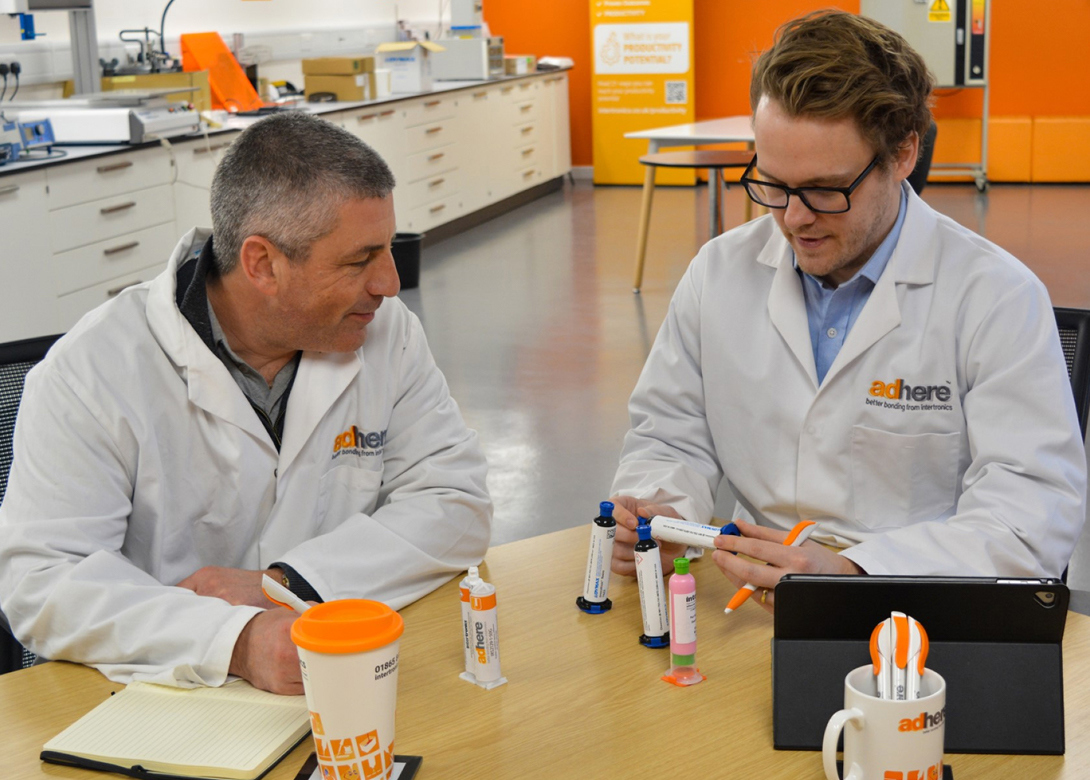
Adhesives are often treated as the final stage of design projects. But, by this point, it may be difficult to find an adhesive that meets all the criteria, meaning the design must be amended or even started again. Here Simon Gibbs, technical sales executive at adhesives company Intertronics, explains the benefits of considering adhesives early in a project.
Though it may seem like a simple task initially, adhesive bonding is a vital and challenging part of product design. Every application is different and establishing what works best for the application involves detailed discussions and testing. For design engineers without specialist adhesives experience, consulting with an adhesives supplier early on will avoid complications later down the line, saving time and money.
In many cases, manufacturers contact adhesive providers once most of the design work is done. The difficulty with this approach is, once much of the design finalised, there will be a particular set of requirements the adhesive needs to meet. There may not be an adhesive that meets the criteria without major compromise, or a suitable adhesive may not be available in the specified packaging or quantities. If this is the case, the design may need to be changed, delaying the project and increasing the costs.
Prototypes and production
Adhesive applications are complex and can easily become unstuck. A small change to a design can have huge impact on the performance of the adhesive. Changing even one thing can mean an adhesive that previously passed the testing for that application now has the potential to fail.
Intertronics recently supported a customer bonding plastic LEDs to plastic housing using a UV curing adhesive. The company then developed another version of the same product, which involved bonding the plastic LEDs to anodised aluminium instead. The new product did not pass the required testing, and the design had to be changed to incorporate a different adhesive.
One common reason the bond fails testing at the later stages of a project is that the prototype has either been made differently or used different materials to the production parts. For example, if the prototype was completed using one white plastic and then was later changed to another. Though it might be natural to expect the same result, the adhesive may no longer bond.
Another factor to consider when changing the substate is that many modern materials are formulated with specific properties where the benefits to the application, such as chemical resistance or UV blocking, are also the basis that makes applications challenging. For instance, properties that make design engineers select polypropylene as substrate, to achieve low surface energy, for example, are the same properties that may also make it more difficult to bond.
As well as changing the substrate from prototype to production, we sometimes see manufacturers change the adhesive. In some cases, design engineers will prototype their product using an adhesive they have available in the lab, or which has been used in the factory for another application. A different adhesive is then selected for the production parts using data sheets, subsequently meeting a challenge once production has started and the specified material doesn’t pass functional tests. It is important to note that the data sheet may not always give the same insights as practical observations, experience, and tests; in many cases, the data needs to be interpreted and extrapolated to fit with the individual scenario.
From design to production
Another possible difficulty, the specified adhesive may not line up with the production team’s schedule. For instance, many manufacturers request UV curing adhesives due to their ability to cure on-demand and in seconds, but the adhesive might not meet the functional requirements for the application in question. However, it is challenging to simply swap one adhesive for another to meet a production related challenge.
A good adhesives supplier can speak to the design engineer about the full complexity of the project, to establish the speed and long-term throughput requirements and make a recommendation for materials and dispensing technology to match. Good advice allows the product to easily be moved into the production stages, without a need for last minute changes due to line speed and yield requirements.
Similarly, if the supplier talks the design engineer through the return on investment (ROI) considerations upfront, they can save their production colleagues time by ensuring what they have specified is commercially and technically viable. For example, a supplier could explain how switching from a manual to an automated process could offer a good ROI, by resolving issues around validating the process, removing operator variance, and reducing the risk of operator RSI.
The earlier the better
These issues can be easily avoided by contacting an experienced adhesives supplier early in the project, so they can advise on material selection, bond-line design and more. It is important the supplier provides all the information needed on the adhesive, including its chemistry, how it cures, and how it can be dispensed.
The adhesives supplier can explain why a material might work, using evidence from previous experience to advise on why it is a good selection, how it might be dispensed and cured, and to highlight any downsides or compromises. There is no ideal adhesive. Good suppliers will be honest and up front about any problems they expect might arise and which potential failure mechanisms should be checked.
Intertronics claims to recognise the importance of asking its customers the right questions, understanding the detail of each application and giving honest answers.

Becca is the latest member to join our team and is eager to get stuck into the world of fasteners. She brings an enthusiastic and fresh outlook on what we do editorially and will be leading our social media activity – including sourcing material, editing articles and posting online.





